Maya ruins to visit, #5: Quiriguá, Guatemala
Not many international tourists visit Quiriguá in Guatemala. Sure, it’s a much smaller site then many other Maya sites. And also a little isolated. That is to say, far away from the country’s other main attractions. Like the Lake of Atitlán in the highlands. Or big brother Tikal #3 in the northern Petén.
However, Quiriguá is certainly worth a visit. Worth a detour even, if necessary. Its central part is beautifully restored. Impressive. I’ve visited the place… I don’t know, at least 4 or 5 times. With family, as well as friends/colleagues.
- Note: From 2000 until 2003 I lived with my wife Wendy & daughter Lisa in Antigua Guatemala, see About Me.
Enough beauty & impression to honor Quiriguá with the number #5 spot on My Personal #12.
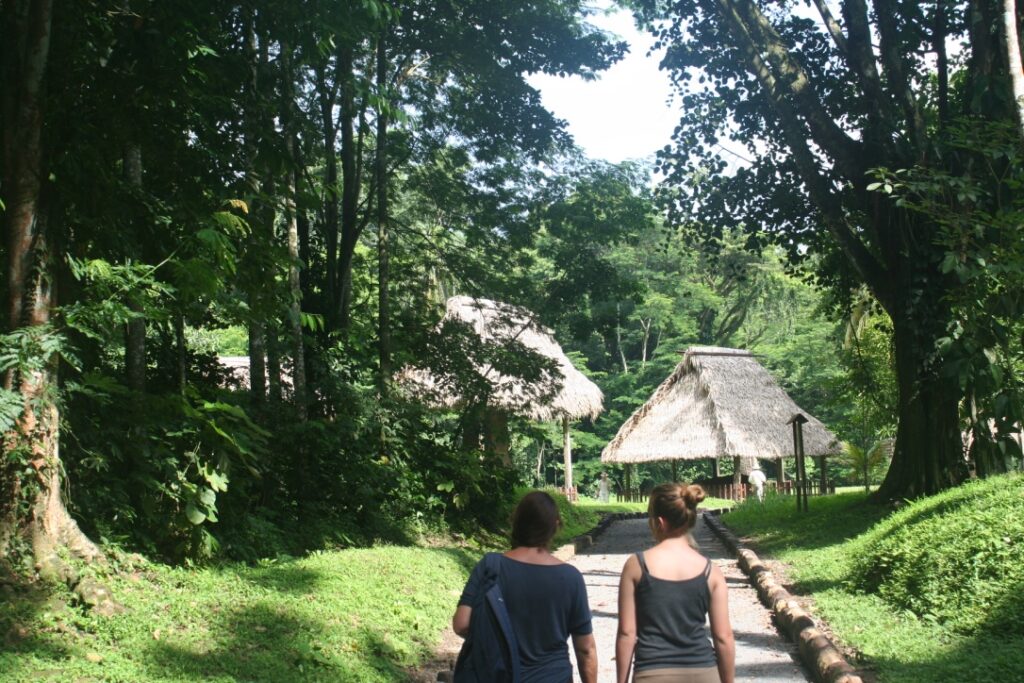
Sister city of Copán
If you already visited My number #1 Maya-site Copán, I do not need to tell you about the many similarities between the two cities. Nor the differences.
- Note: Although located in two different countries (Honduras & Guatemala), en linea recta Quiriguá is only 48km/ 30 miles away from Copán.
You immediately notice Quiriguá is a smaller version of Copán. Most notably in style. Like the steles – the more than life-size statues of the former Maya-leaders. Beautifully sculptured, representing the former Maya leaders. The Ajaws or Ahua’s. Craved out in stone, surrounded by all kind of symbols & inscriptions. Telling “their” story.
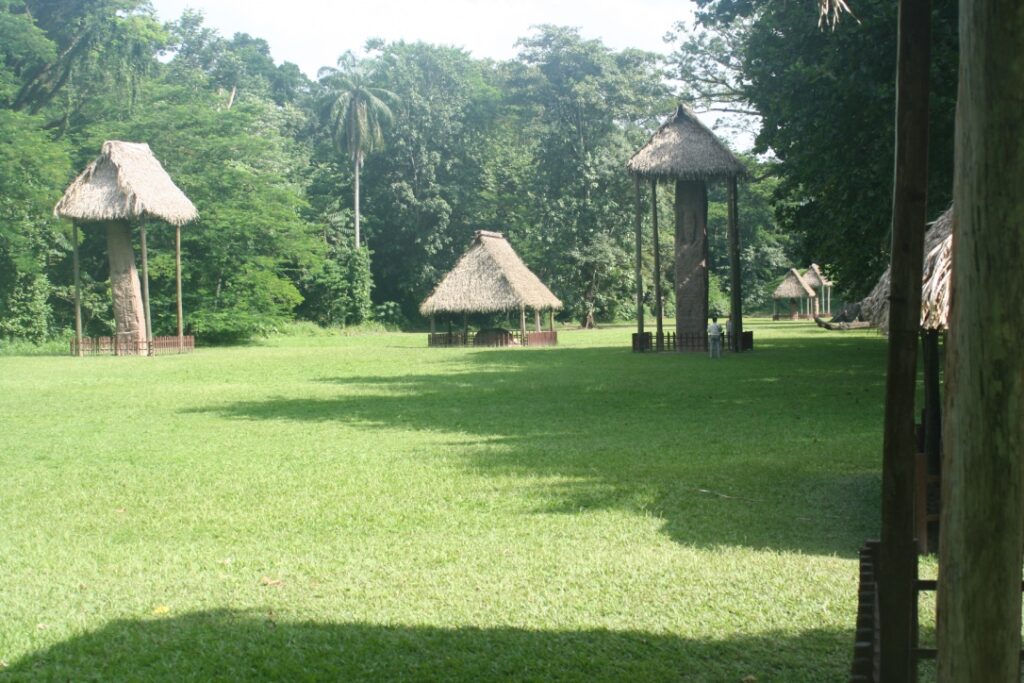
- Because of the similarities, some arqueologists think it’s probable that some craftsmen worked in both places. That is in Copán, as well as in Quiriguá.
A big difference though are the heights of some of the Quiruguá-steles. While those in Copán are all around 3m/ 10ft high, the highest in Quiriguá reaches up to 10m/ 32ft. Enormous really.
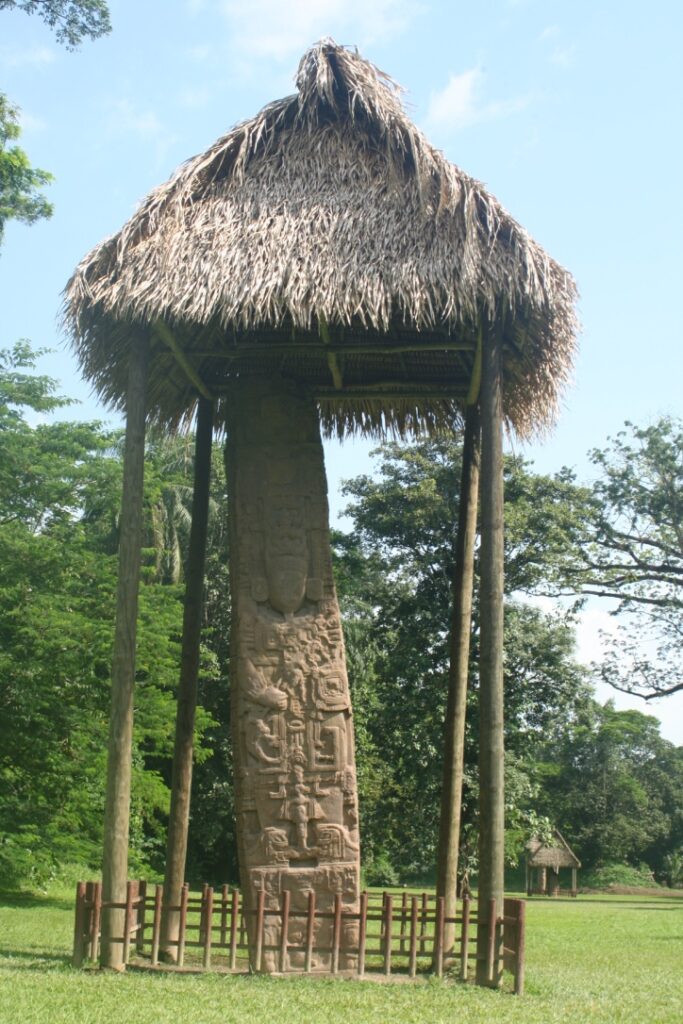
- Note: As Copán, Quiriguá had its heyday during the Classical period. Predominantly though as a vassal state of the former city. That’s is to say, … until 738 AD, when Quiriguá surprisingly succeeded in capturing the ajaw of Copán. A notorious king who was sacrificed to the Maya gods in Quiriguá. Sacrificed in a public ceremony.
- An historic event, which resulted in an expansion of Quirigua in buildings & monuments. While Copán obviously had to recuperate after their unexpected defeat and loss of their highest leader.
- Although Quiriguá reached it’s highest peak during the 8th century, the city couldn’t avoid its downfall soon thereafter. However, because of its location along an important trade route – the Río Motagua – Maya’s from the north (probably from Yucatán) occupied the city anew somewhere between 900 & 1200 AD.
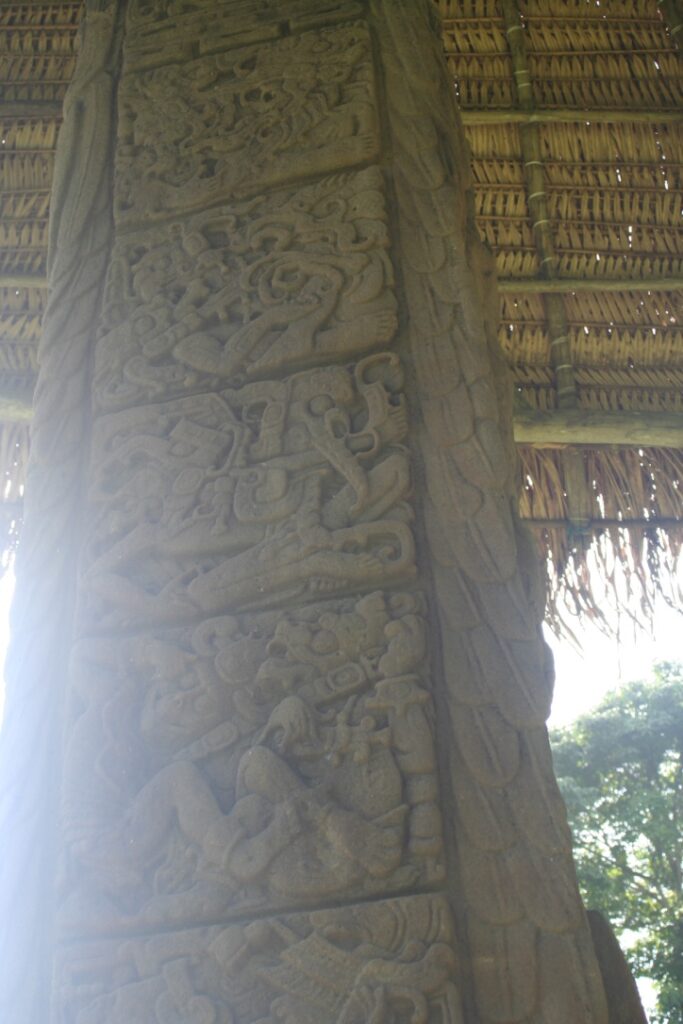
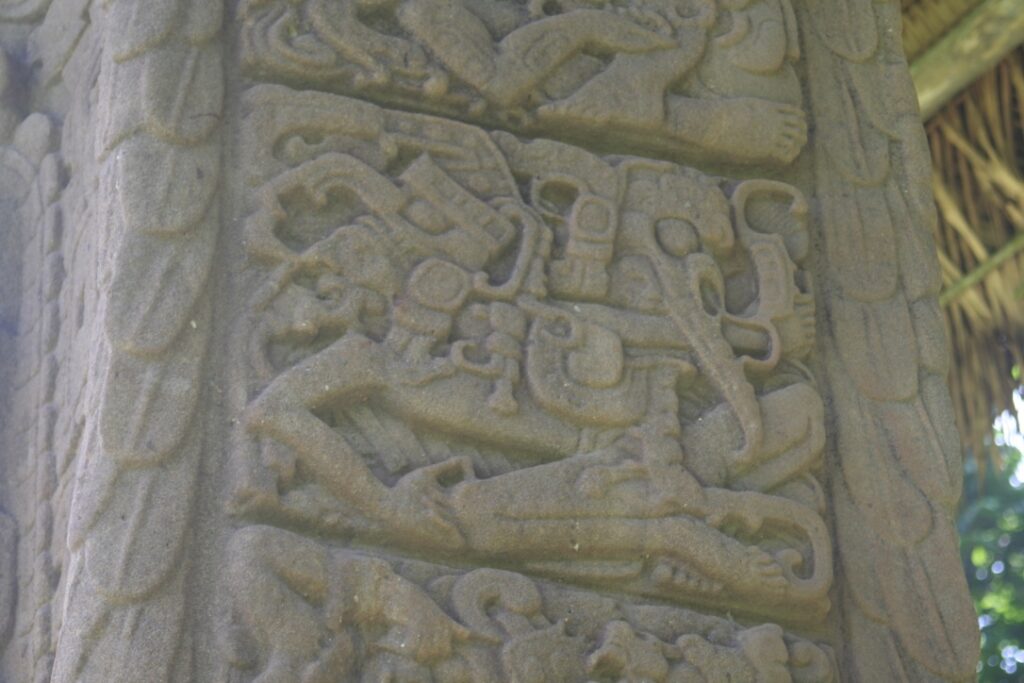
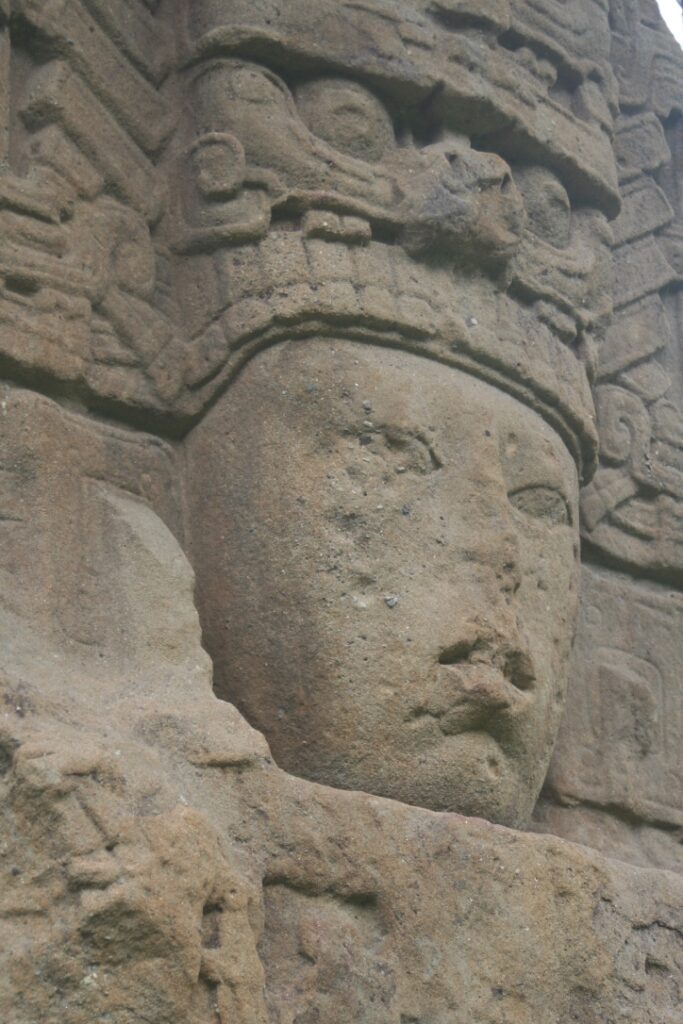
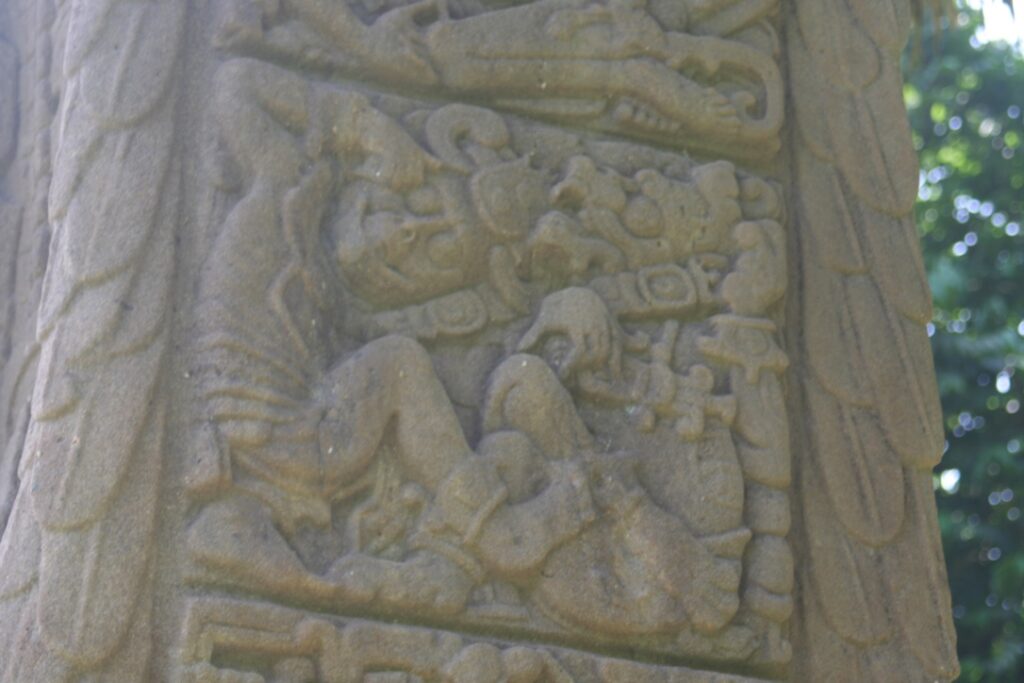
Quiriguá, rediscovered
As elsewhere, local people always knew about the nearby ruins. For the outer world though, Quiriguá was rediscovered in 1839, by the Englishman Frederick Catherwood. The famous architect/painter/draftsman who accompanied John Lloyd Stephens on his two historic journeys through the Mundo Maya.


- Note: To learn a little bit more about these two fascinating men. And also about the book I’m writing about their adventures & rediscoveries, click on: Introduction on the Mundo Maya.
Accidentally Catherwood was in Quiriguá without his boss. The New Yorker Stephens at the time was acting as a US ambassador in Central America and trying to find the highest authorities. So thay’s why the honor goes to Catherwood.
- Note: While in most mayor Maya-sites the original names are recovered, Quiriguá still has to wait for that to happen. The current name was simply derived from the village nearby.
In Catherwood’s footsteps many other big names would bring a visit to Quiriguá. Adventurous men like the Englishman Alfred P. Maudslay & the North American Sylvanus Morley for example. Two pioneers, the amateur-archeologists to visit Quiriguá.
After that, little by little future experts – men & women – would rebuild the story of Quiriguá & the Mundo Maya.
Quiriguá: worth a visit
Because Quiriguá is located along one of the main highways of Guatemala, it’s easy to bring the site a quick visit. A visit along the way. Another option is to stay the night in the nearby village of Quiriguá. Quiriguá houses several, mostly very basic hotels.
- Note: Quiriguá is located along the Corredor Interoceánico, the highway which connects the Pacific & Atlantic Oceans. An alternative to the Panama Canal.
My visits to Quiriguá were mostly stops on my way to or from the Petén-jungle. The last time though, I stayed the night in Quiriguá with my wife & daughter. The next day taking a tuk tuk to the ruins. A little adventure in itself.
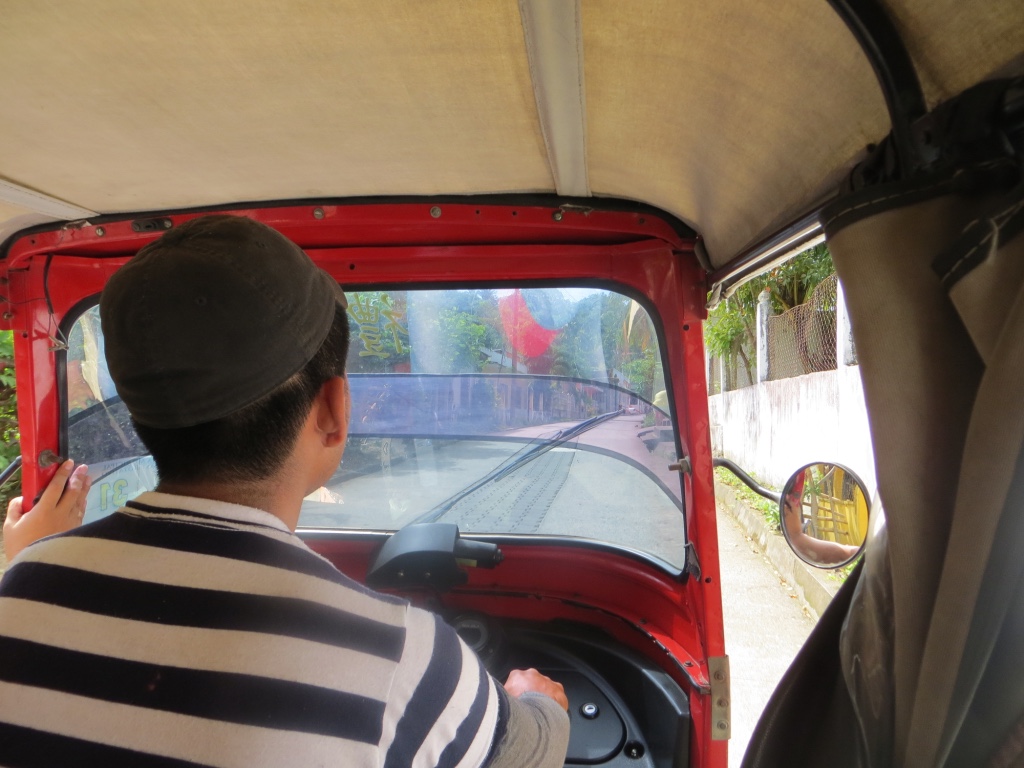
In an hour you can easily see the whole site (including the small museum). The steles first. The temples in the background, with the unique zoomorphs in front of them. Enormous altars in the shape of an animal – mostly a crocodile – fully labored with characters, symbols & inscriptions. Literally, tons of information on Quiriguá’s history.
Every time I explored Quiriguá it was hot…. and I mean very hot. A tremendous humidity accompanied every visit. A few times a heavy, but welcome rain came rolling in. An experience in itself, because the Maya-site is surrounded by big tropical trees. Like palms, who loudly warn you of the tropical shower approaching.
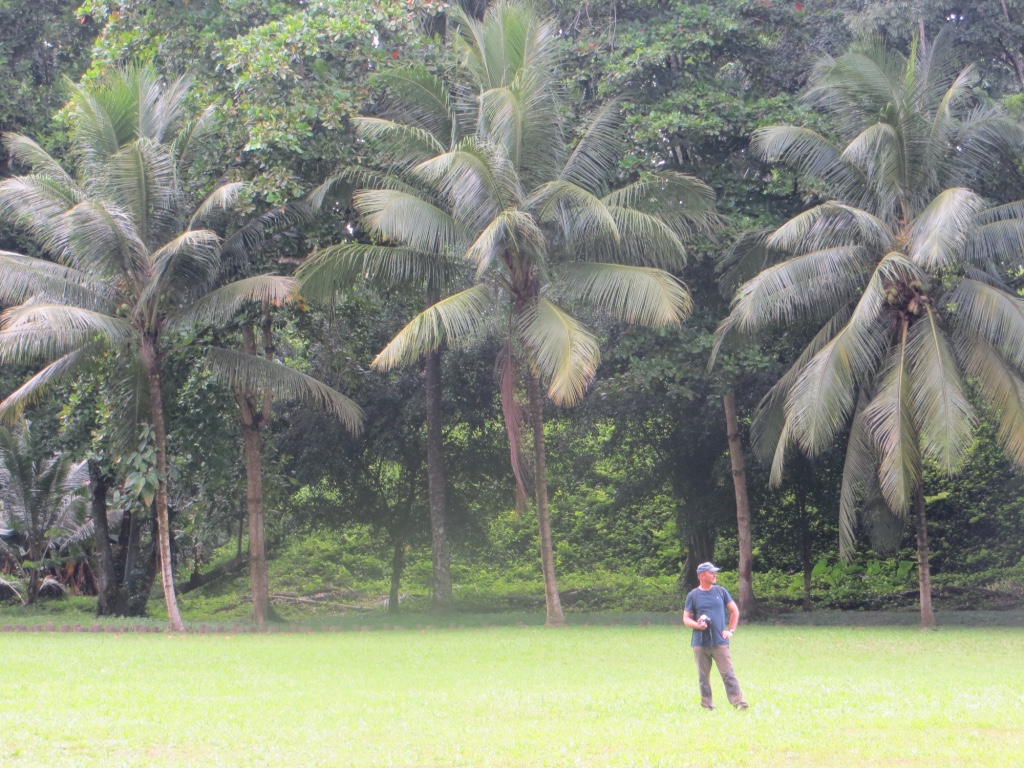
Reading about Quiriguá
There are many interesting general books on the Maya Civilization. Besides the adventurous Incidents of Travel books of Stephens and Catherwood – see Intro to the Mundo Maya – I’d like to mention one unique book title (Again for some of you!):
- Sharer, Robert & Traxler, Loa P., The Ancient Maya, 2006 (originally 1946), Stanford University Press, Stanford California. ISBN 0 8047 4817 9.
Click on cover, if interested.
(“Paid link”)

A specific work on Quiriguá I really enjoyed, is:
- Looper, Matthew G., Lightning warrior – Maya art and kingship at Quiriguá, 2003, University of Texas Press. ISBN 978 0 292 77817 7
(“Paid link”)

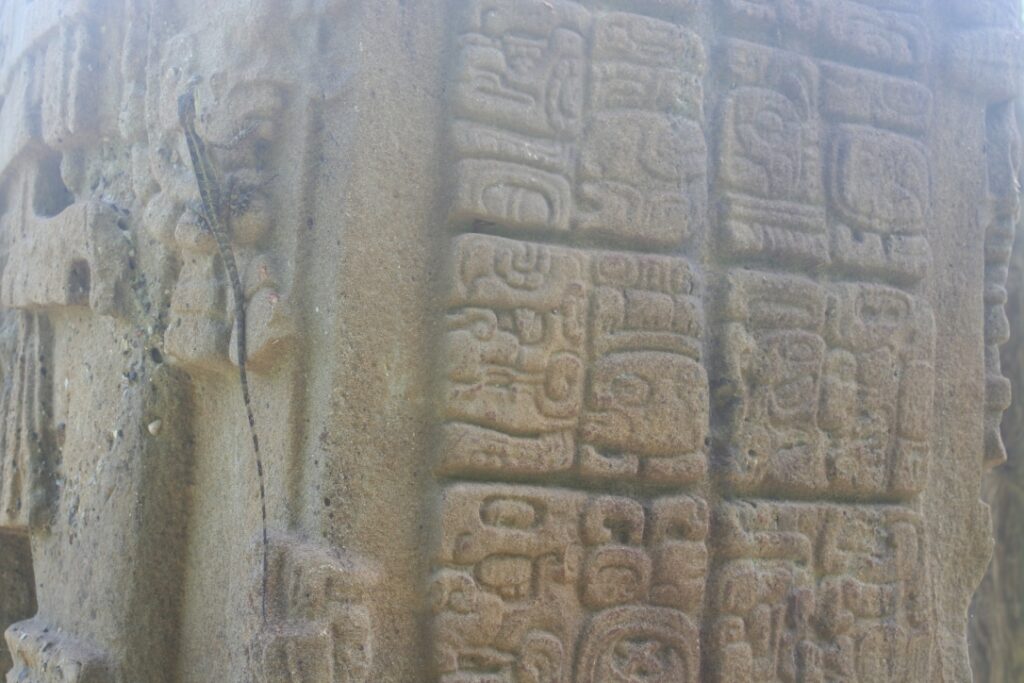
Through this post, I hope I’ve convinced you to visit Quiriguá one day. On your way from or to the Guatemala highlands. Going to or coming from the Petén jungle. Tikal, Yaxhá maybe.
Or else, Río Dulce, just off the gigantic bridge that crosses the Lake of Izabal. Also a nice, relaxing stop to explore the area around the lake. Or make an historic boat tour over the lake & river to the Caribbean exit at Livingston.
For an overview of my personal favourites, go to: Top #12 Maya-sites
For an overview of all travel posts of my blog, go to: the Home Page.
- Final message, for fellow travel writers & bloggers: TravelPayOuts is a global integrated affiliate program focused exclusively on travel offers. If it works for me, it will probably work for you too: TravelPayOuts.


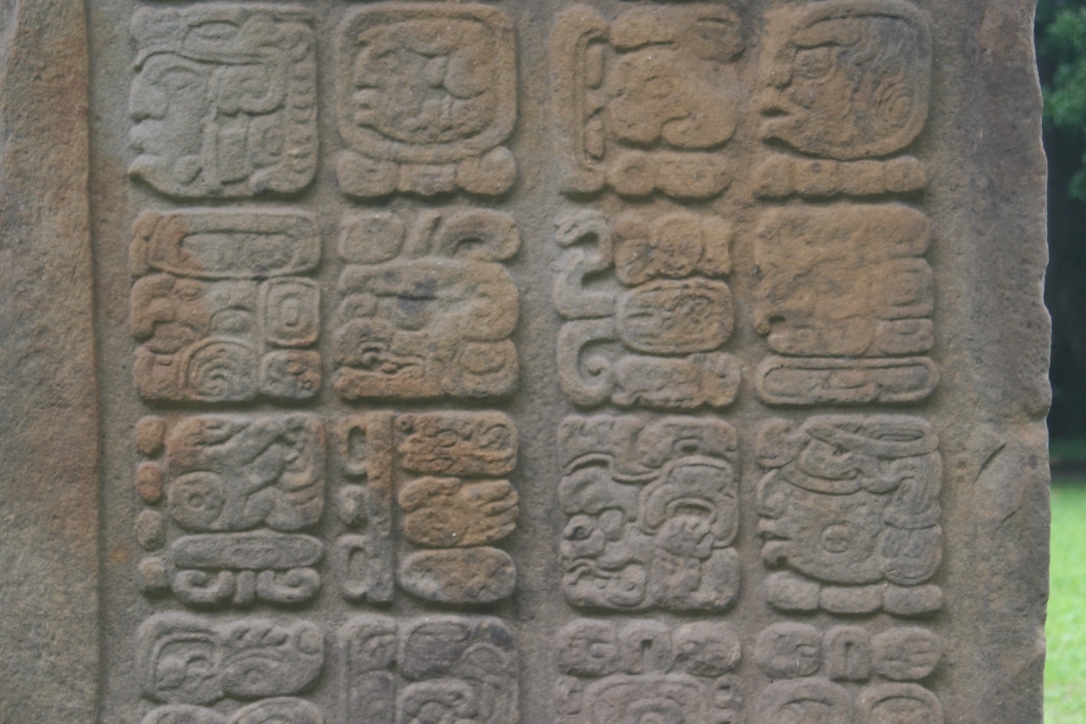
Comments
One response to “The best Maya ruins to visit, #5: Quiriguá”
[…] The best Maya ruins to visit, #5: Quiriguá […]